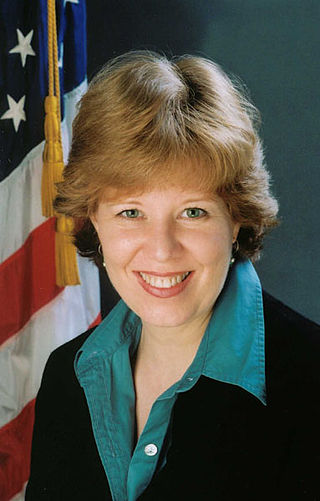Related Research Articles

Emergency contraception (EC) is a birth control measure, used after sexual intercourse to prevent pregnancy.

Teenage pregnancy, also known as adolescent pregnancy, is pregnancy in a female adolescent or young adult under the age of 20. Worldwide, pregnancy complications are the leading cause of death for women and girls 15 to 19 years old. The definition of teenage pregnancy includes those who are legally considered adults in their country. The WHO defines adolescence as the period between the ages of 10 and 19 years. Pregnancy can occur with sexual intercourse after the start of ovulation, which can happen before the first menstrual period (menarche). In healthy, well-nourished girls, the first period usually takes place between the ages of 12 and 13.

Family planning is the consideration of the number of children a person wishes to have, including the choice to have no children, and the age at which they wish to have them. Things that may play a role on family planning decisions include marital situation, career or work considerations, financial situations. If sexually active, family planning may involve the use of contraception and other techniques to control the timing of reproduction.
The Mexico City policy, sometimes referred to by its critics as the global gag rule, is a former United States government policy that blocked U.S. federal funding for non-governmental organizations (NGOs) that provided abortion counseling or referrals, advocated to decriminalize abortion, or expanded abortion services. When in effect, the Mexico City policy is a U.S. government policy that requires foreign non-governmental organizations to certify that they will not "perform or actively promote abortion as a method of family planning" with non-U.S. funds as a condition for receiving U.S. global family planning assistance, and during its January 23, 2017 implementation any other U.S. global health assistance, including U.S. global HIV and maternal and child health (MCH) assistance.
The Planned Parenthood Federation of America, Inc. (PPFA), or simply Planned Parenthood, is a 501(c)(3) nonprofit organization that provides reproductive and sexual healthcare, and sexual education in the United States and globally. It is a member of the International Planned Parenthood Federation (IPPF).
The Guttmacher Institute is a research and policy NGO that aims to improve sexual health and expand reproductive rights worldwide. The organization was started in 1968 and functions as both a research and educational organization. It operates mainly in the United States but also focuses on developing countries. Founded as part of Planned Parenthood, the Guttmacher Institute became independent from Planned Parenthood in 2007.
Take the Charge is a government program that provides free family planning and pregnancy prevention services to low-income residents of Washington state. The program expands Medicaid coverage for family planning services to individuals whose income is 200% or lower than the federal poverty level (FPL). By reducing the prevalence of unintended pregnancies, the goal of the program is to improve public health while reducing Federal and State Medicaid costs of unplanned pregnancies and their consequences. As of November 2007, there were 200 clinics in Washington providing the program's services.

Susan Orr headed the United States Children's Bureau, a federal agency organized under the United States Department of Health and Human Services' Administration for Children and Families, Administration for Children and Families, as Associate Commissioner.
Long-acting reversible contraceptives (LARC) are methods of birth control that provide effective contraception for an extended period without requiring user action. They include injections, intrauterine devices (IUDs), and subdermal contraceptive implants. They are the most effective reversible methods of contraception because their efficacy is not reliant on patient compliance. The typical use failure rates of IUDs and implants, less than 1% per year, are about the same as perfect use failure rates.

Birth control, also known as contraception, anticonception, and fertility control, is the use of methods or devices to prevent unintended pregnancy. Birth control has been used since ancient times, but effective and safe methods of birth control only became available in the 20th century. Planning, making available, and using human birth control is called family planning. Some cultures limit or discourage access to birth control because they consider it to be morally, religiously, or politically undesirable.
The Title X Family Planning Program is the only federal grant program dedicated to providing individuals with comprehensive family planning and related preventive health services. It was enacted under President Richard Nixon in 1970 as part of the Public Health Service Act.
Unintended pregnancies are pregnancies that are mistimed, unplanned or unwanted at the time of conception.

Birth control in the United States is available in many forms. Some of the forms available at drugstores and some retail stores are male condoms, female condoms, sponges, spermicides, and over-the-counter emergency contraception. Forms available at pharmacies with a doctor's prescription or at doctor's offices are oral contraceptive pills, patches, vaginal rings, diaphragms, shots/injections, cervical caps, implantable rods, and intrauterine devices (IUDs). Sterilization procedures, including tubal ligations and vasectomies, are also performed.
A contraceptive mandate is a government regulation or law that requires health insurers, or employers that provide their employees with health insurance, to cover some contraceptive costs in their health insurance plans.
Reproductive coercion is a collection of behaviors that interfere with decision-making related to reproductive health. These behaviors are meant to maintain power and control related to reproductive health by a current, former, or hopeful intimate or romantic partner, but they can also be perpetrated by parents or in-laws. Coercive behaviors infringe on individuals' reproductive rights and reduce their reproductive autonomy.

Globally approximately 45% of those who are married and able to have children use contraception. As of 2007, IUDs were used by about 17% of women of child bearing age in developing countries and 9% in developed countries or more than 180 million women worldwide. Avoiding sex when fertile is used by about 3.6% of women of childbearing age, with usage as high as 20% in areas of South America. As of 2005, 12% of couples are using a male form of contraception with rates of up to 30% in the developed world.

Teenage pregnancy in the United States refers to females under the age of 20 who become pregnant. 89% of these births take place out-of-wedlock. Since the 1990s, teen pregnancy rates have declined almost continuously in the United States, but the United States still has one of the highest teenage birth rates among the industrialized nations. The 5 states with the highest teen birth rate are Arkansas, Mississippi, Louisiana, Oklahoma, and Alabama. According to the Centers for Disease Control, evidence suggests that the decline in teenage pregnancy is due to abstinence teaching and the use of birth control. Although the decline is considered good news, the racial/ethnic and geographic disparities continue in The United States. In 2019, the birth rates for Hispanic teens and non-Hispanic Black teens were more than double than the rates for white teens.
Pregnancy options counseling is a form of counseling aimed to counsel women on decision-making for a troubling or unintended pregnancy.

Maternal healthcare in Texas refers to the provision of family planning services, abortion options, pregnancy-related services, and physical and mental well-being care for women during the prenatal and postpartum periods. The provision of maternal health services in each state can prevent and reduce the incidence of maternal morbidity and mortality and fetal death.

International family planning programs aim to provide women around the world, especially in developing countries, with contraceptive and reproductive services that allow them to avoid unintended pregnancies and control their reproductive choices.
References
- ↑ Institute of Medicine (US) Committee on a Comprehensive Review of the HHS Office of Family Planning Title X Program; Stith Butler A, Wright Clayton E, editors. A Review of the HHS Family Planning Program: Mission, Management, and Measurement of Results. Washington (DC): National Academies Press (US); 2009. 2, Overview of Family Planning in the United States. Available from: https://www.ncbi.nlm.nih.gov/books/NBK215219/
- ↑ Cromer, B; McCarthy, Maureen (1999). "Family Planning Services in Adolescent Pregnancy Prevention: The Views of Key Informants In Four Countries". Family Planning Perspectives. 31 (6): 287–93. doi:10.2307/2991539. JSTOR 2991539. PMID 10614519.
- ↑ "US Office of Population Affairs - Legislation". Archived from the original on 2008-09-20. Retrieved 2017-09-09.
- ↑ Sonfield A, Alrich C and Gold RB, Public funding for family planning, sterilization and abortion services, FY 1980–2006, Occasional Report, New York: Guttmacher Institute, 2008, No. 38. http://guttmacher.org/pubs/2008/01/28/or38.pdf
- 1 2 3 4 5 6 Cleland K, Peipert JF, Westhoff C, Spear S, Trussell J (May 2011). "Family planning as a cost-saving preventive health service". N. Engl. J. Med. 364 (18): e37. doi:10.1056/NEJMp1104373. PMID 21506736.
- ↑ "Abortion". Planned Parenthood Federation of America Inc. Retrieved 21 April 2012.
- 1 2 James Trussell; Anjana Lalla; Quan Doan; Eileen Reyes; Lionel Pinto; Joseph Gricar (2009). "Cost effectiveness of contraceptives in the United States". Contraception. 79 (1): 5–14. doi:10.1016/j.contraception.2008.08.003. PMC 3638200 . PMID 19041435.